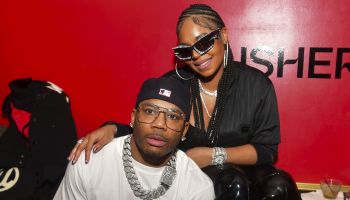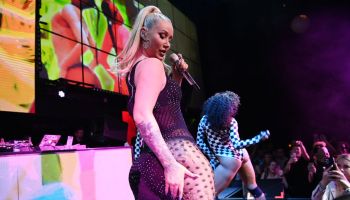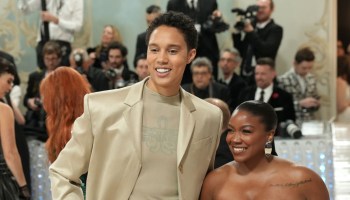Long before Hypebeast. Long before wrap-around-the-block queues in front of the Supreme store. Long before stunting on the ‘gram. Definitely way before it was seen in Vogue and on the runways in Milan, Paris, and New York. Streetwear has been a thing. If we’re keeping it all the way real, the streets have long been a fruitful source of inspiration for designers. And while the credit hasn’t always been paid to the Black creators, designers and stylists, in particular, let it be known that Black people are deeply rooted in its past, present and will most definitely be a part of its future. Suffice it to say the culture doesn’t move forward without our ingenuity.
It’s important to recognize the true origins of streetwear. After all, if you don’t know where it’s been how can you truly appreciate where it’s going? It’s why we’ve decided to do a semi-deep dive into the world of fashion’s most interesting and innovative subset. It’s not just about stunting for the gram but rather a culture and important moments we embody daily. If we don’t preserve the history and recognize the work that people did for us, the vibe gets commercialized and Black people will continue to fall victim to erasure.
You study the stats of your favorite athlete. Know all the stories of your favorite artist. Yet the brands you wear and put on the ‘gram is where you draw the line? Nope, not on our watch. Scroll below to learn about the history of streetwear. You dig?
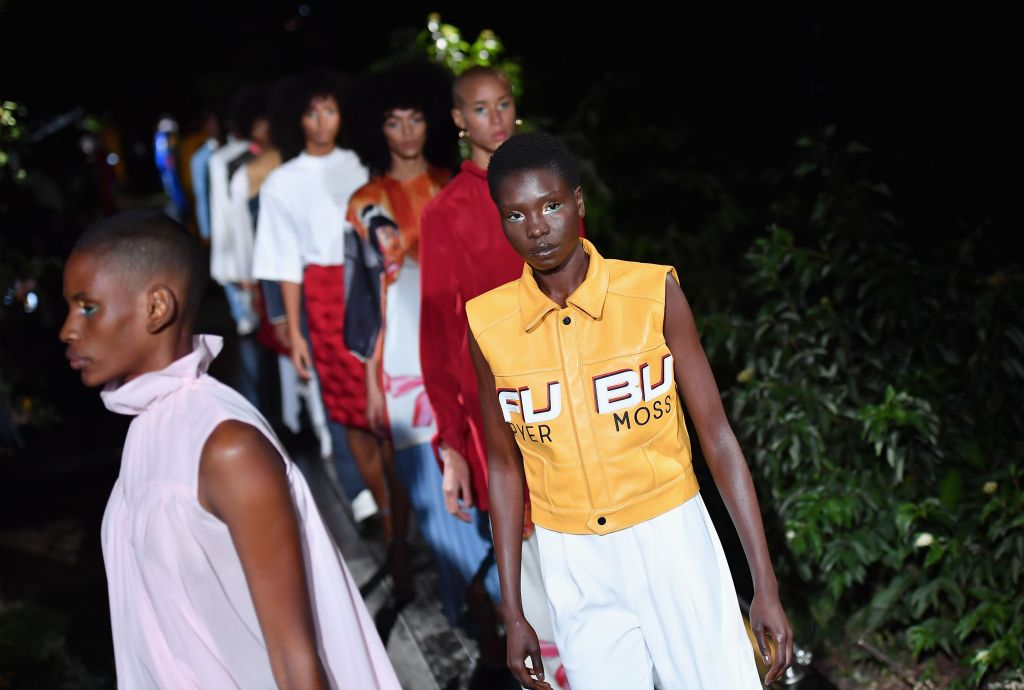
Source: ANGELA WEISS / Getty
Past
Remember when you were a kid and your mom made you change out of school clothes and put on street clothes? Going even deeper, remember when you weren’t allowed to sit on the bed or furniture in your street clothes? Historically, the idea of clothes per occasion is a thing, especially in the Black community. If you think about it, there’s always been a costume or an occasion to dress for. Dressing up clothes. Going out clothes. Work clothes. Clothes tend to be compartmentalized.
Perhaps that’s why, for many, the lines are sometimes blurred between casual wear and streetwear.
Streetwear started to become popular right after World War II. “There was a youthquake — a moment where people started dressing more casually,” says Jonathan M. Square, Ph.D., Harvard professor, and scholar of fashion and visual culture in the African diaspora. “Men wore less suits and more denim.” He adds, “There were more sneakers and less ‘proper shoes’ — a general casualization of fashion.”
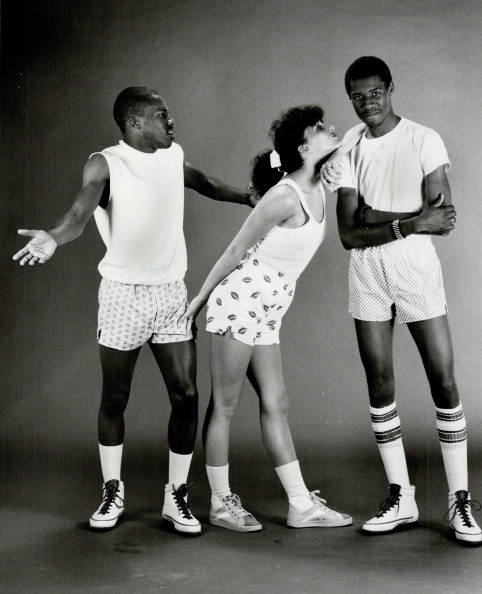
Source: Erin Combs / Getty
Like any subculture or genre, things change and evolve. Some might argue for the better. Streetwear took on a new definition starting from the ’70s. “It’s a more sporty, hip-hop–infused fashion,” Square states. One of the brands that pioneered this movement was Williwear Limited, created by the late designer Willi Smith. “Willi Smith’s idea of streetwear was the kind of clothes you don’t wear to church,” says Square. Smith was once quoted as saying, “I don’t design clothes for the Queen, but the people who wave at her as she goes by.” Staying in this theme of stylish fashion for the common people, Smith also made sure his designs were at an affordable price point. Cheap they were not, but rather, folks could save a check or two and get his clothing.
MUST READ: DJ D-Nice Made The Club Digital And Became The King Of Black Joy In 2020
One of his most notable offerings was his Fall/Winter 1983 collection titled “Street Couture.” Drawing from his inspiration, Smith’s designs had notes of hip-hop, the bold yet refined pieces worn by the community in Harlem, and the at-the-time current silhouette of slouchy shirts and effortless denim. Unlike the industry he was in, Smith credited a lot of his talent to being Black. According to Hypebeast, he once remarked, “Being Black has a lot to do with my being a good designer…Most of these designers who have to run to Paris for color and fabric combinations should go to church on Sunday in Harlem. It’s all right there.” Smith is an unsung hero of the streetwear movement, and unfortunately, an untimely death ended his career way too early. Thankfully, Cooper Hewitt has an online exhibit where you can learn all about Smith’s 20-year career.
Willwear inspired a new generation of brands that are also dedicated to designing with hip-hop elements and the cool that Black people naturally possess. Brands like Walkerwear and Karl Kani began to emerge. Unlike Williwear and Dapper Dan, their landscape or neighborhood influence was Brooklyn. April Walker (who operates Walkerwear to this day) was inspired by Dapper Dan’s boutique, and wanted to bring that same energy to Brooklyn. Dressing the likes of both celebrities (see: Notorious B.I.G.) and regular consumers, her collection tapped into her community, and was aspirational but accessible. Karl Kani, who is known as the originator of urban street fashion, catered to men who wanted to either wear their clothes bigger or were bigger themselves. Due to his knowledge of the counterfeit community, Kani created a metal and leather plate as his emblem, and that proved to be his signature.

Source: Jeff Kravitz / Getty
From FUBU to Cross Colours (and a ton of others), the influx of streetwear brands progressed apace for the rest of the ’80s and ’90s. True to the nature of fashion, evolution continued. Once upon a time, it was all about both consumers and celebrities in your clothes. The early 2000s saw celebrities aiming to get you into their clothes. Brands like Rocawear, started by Jay-Z, Sean John by Diddy, and Baby Phat from Kimora Lee, shifted the prevailing pattern and permeated the streetwear scene in an impactful way.
Present
Generally, there’s a significant relationship between streetwear and menswear. “Streetwear tends to skew masculine,” Square offers. “There’s a tendency in streetwear brands to learn toward masculine codes and silhouettes.” This is evidenced by the popular pieces you see today. In recent years, there’s been a true leaning into hoodies and sweats. Once, these garments might have been considered dress down, or for lack of a better word, “bummy.” Nowadays, it’s nothing to see these pieces cost more than a suit or other sportswear items.
“Lululemonfication of fashion,” Square says. As athleisure continues to trend, more people are wearing streetwear — not to work out in, but rather to live life in. Think of it like this: Your parents got dressed up to go on a plane. Now the perfect outfit for a plane is a sweatsuit and a pair of fresh (often expensive) sneakers.

Source: Edward Berthelot / Getty
There are new players in the streetwear realm, and unlike their predecessors, accessibility isn’t at the forefront for this group. Designers like Jerry Lorenzo of Fear of God, Kerby Jean-Raymond at Pyer Moss, and Virgil Abloh of Off-White provide elevated streetwear at high-end prices. They don’t just stop there though. These designers collaborate with more accessible sports-focused brands like Reebok and Adidas to create luxe styles at more affordable prices. There’s a balance that is important. Much like the balance that must be navigated to recognize their talent for what it is and not for their color. Some brands are labeled streetwear simply because they’re Black, and that’s not always the case. It’s vital that in the present we recognize the complexity of Black people, especially when it applies to our contributions and conversations in the fashion arena.
Future
As we’ve mentioned previously, fashion continues to evolve with the times. While there’s no way we can say for sure, we can certainly make some educated guesses on what’s next.
It’s true that streetwear is likely to be cozy, and that’s a trend that people are very much leaning in to and loving, especially these days. Yet given the cycles of fashion, there will be a time where suiting will be on top again. What will change is the fabrics that suits are made of. Performance fabrics being repurposed in more tailored pieces is on the horizon. It’s already being seen with people throwing their going out topcoats over sweats and sneakers, and seams are appearing down a pair of pants the way you would see on a trouser.
The want and need for genderless clothing will also find its way in streetwear. “Ivy Park is a good sign that this is coming,” Square suggests. “It’s streetwear and it’s on all bodies.”
SEE ALSO:
Pyer Moss Is Dropping Its First Ever In-House Sneaker Dubbed “The Sculpt”
Foot Locker Launches ‘Behind Her Label’ To Celebrate Fashion Designers In Streetwear
The History of Streetwear: Past, Present & The Future Of Fashion’s Flyest Subset was originally published on cassiuslife.com









